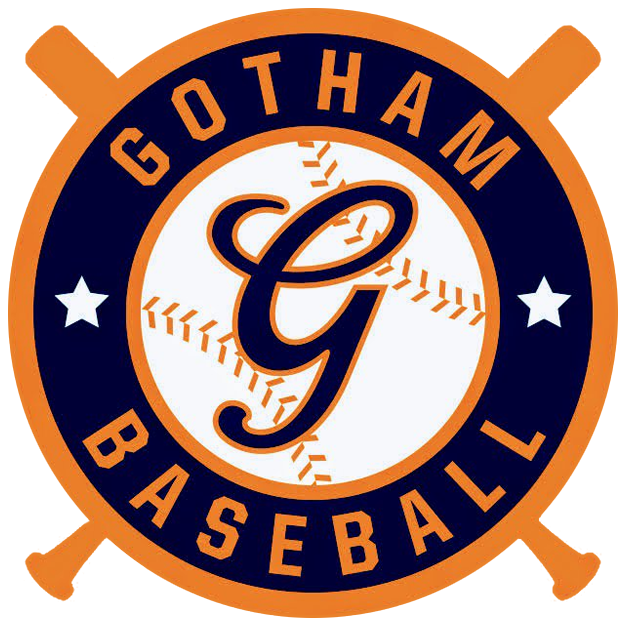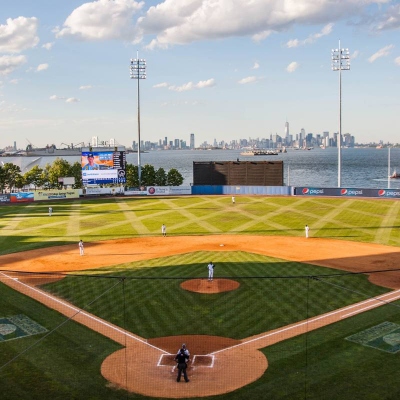Judgment Day fell on Sept. 30, 2020, during a year in which minor league baseball ceased to exist, another entity plagued by The Plague. Already financially insecure and fearful, minor league teams had their anxieties multiplied on that fateful Wednesday.
That day it became official. The marriage was over and a new relationship was to begin. The Professional Baseball Agreement (PBA) between Major League Baseball and Minor League Baseball had expired. With no PBA, there was no love lost between the leagues in subsequent weeks.
It was no surprise this day would come. In October 2019, anticipating the PBA expiration, MLB had publicly proposed restructuring the minors as part of its “One Baseball” vision. Goals included centralizing, simplifying, and improving player development. To do this, MLB planned to cut the number of minor league teams from 162 to 120—down to four affiliates per MLB club—as well as shuffle certain teams/leagues within the minors. It claimed such moves would allow for significant benefits: facility upgrades, better pay and conditions for minor league players, less travel within leagues, and closer proximity between MLB squads and their affiliates.
In essence, addition by subtraction.
However, subtraction had an unseen, human cost. By December, with the cuts finally over, minor league employees across the country had awakened to the news of losing their jobs. Baseball-loving communities learned America’s Pastime would no longer be in their backyards, or at least not in the same form. Some rural towns lost their only source of family entertainment.
Locally, the Class A Short-Season New York Penn-League (NYPL), of which both the Brooklyn Cyclones and Staten Island Yankees were members, was eliminated. The Cyclones survived contraction, were moved to the High-A Mid-Atlantic League, and will continue to serve as a New York Mets farm team. The S.I. Yankees were not as fortunate; the New York Yankees cut ties with the now-defunct Staten Island affiliate.
Cyclones radio broadcaster and account executive Keith Raad, the voice of the Brooklyn club, understands the toll contraction took on his baseball brethren. But he also acknowledges the potential positives of a reworked minor league system.
“A lot of good people lost jobs, a lot of communities lost baseball,” Raad laments. “However, sometimes you have to look at the bigger picture.
“Some places in this country just did not have pro-level stadiums. Plus, players wanted to be paid more and MLB wanted better travel within the leagues. Unfortunately, you have to cut the fat to make some of this happen. And more casual fans may now find it easier to understand the minors since there will be fewer levels.”
To ensure baseball remains in affected areas, MLB had worked behind the scenes with USA Baseball—the national governing body of organized baseball—to devise creative solutions. In 2017, unrelated to future contraction, MLB and USA Baseball had collaborated on the Prospect Development Pipeline (PDP), an attempt to identify and groom elite amateur talent. To enhance this effort, MLB recently converted the once Rookie-level Appalachian League into a 10-team wood-bat summer league for freshman and sophomore college players. Soon after, MLB coordinated with Prep Baseball Report to form the six-team (four from the now-discontinued NYPL) MLB Draft League, a league devoted to showcasing and developing top-tier and draft-eligible amateur players.
MLB also announced that the Atlantic League, American Association, Frontier League, and Pioneer League would each become an independent “MLB Partner League.” Under this setup, MLB will provide initial funding for operating costs as well as other support.
How serious is MLB about these changes? Maybe not very, according to Kevin Reichard, publisher at August Publications and BallparkDigest.com.
“The title of ‘MLB Partner League’ means nothing,” he says. “There have been no negotiations and it’s a less-than-solid agreement. This is just a business opportunity for MLB.”
Regarding the new Appalachian League and MLB Draft League, the baseball pundit points to the reported short-term agreements MLB has put forth: only a three-year commitment to the Appalachian League and a five-year commitment to the Draft League.
“Those weak commitments tell you all you need to know,” Reichard says, implying that MLB may question the long-term viability of those leagues.
With a now empty Richmond County Bank Ballpark, Staten Island wants some form of baseball. Sources say an Atlantic League squad may be coming to the borough in the near future. MLB, New York City officials, and Staten Island politicians are working to make that happen.
“An Atlantic League team would do well on Staten Island,” says New York Yankees minor leagues insider Robert Pimpsner. “Fans would enjoy the high quality of play, roster continuity, and different, unique team name.
“The Atlantic League really wants a team on Staten Island because it’s a desirable market and not a small town.”
Pimpsner, the founder of PinstripedProspects.com, had covered the Staten Island Yankees since 2003 and understands what the borough’s baseball fans desire. For example, he believes a summer collegiate league team would be unsuccessful on the island.
“The level of play would be too low for a New York market that demands a higher quality of baseball,” Pimpsner says. “However, in smaller markets these teams can do well.”
Glenn Reicin, one of the partners in Nostalgic Partners LLC—the group that has owned the Staten Island Yankees since 2011—agrees that a summer collegiate league team in Staten Island “wouldn’t work.” Unlike Pimpsner, though, he and his group don’t envision prosperity with an Atlantic League club.
“While we want baseball to survive on Staten Island, an Atlantic League team is just a different type of business,” Reicin says.
How so? In an early December press release, Nostalgic Partners LLC explained that adopting an independent, unaffiliated team—such as an Atlantic League squad—would be detrimental to its interests. It cited a “subpar” quality of play, “additional expenses,” and “loss of the connection to the Yankees” as reasons to “step aside and let others try to save baseball in Staten Island.”
According to Will Smith, the president and operating partner of the now-eliminated Staten Island affiliate, the “additional expenses” of an independent team would be too much to bear.
“You would have to pay salaries to players, coaches, and staff, not to mention workers’ compensation as well,” Smith says. “I estimate that would be three-quarters of a million dollars,” an amount he finds excessive.
Smith, though, also notes the positives of an Atlantic League franchise and does not rule it out as a possibility.
“Baseball-wise, an Atlantic League team would be a decent replacement,” he adds. “I know some people within the league. It might be a viable option, especially because there would be more games, which means more revenue possibilities.”
Most importantly, would former S.I. Yankees fans welcome independent ball? Whom better to ask than die-hards Pam Cocozello and Beverly Vaiano, who have cheered for the “Baby Bombers” since their inception.
“I would definitely consider going to Atlantic League games because at least it’s baseball,” says Cocozello, a season ticket holder since 1999—Staten Island’s inaugural season. “But I wouldn’t go to other sporting events. I just don’t want to see that stadium gone.”
“I might attend a few games if another baseball team is brought in, but I definitely will not buy season tickets,” says Vaiano, a season ticket holder since 2001. “I’m a Yankees fan who wants to see Yankees affiliates.”
Whether for or against the realignment of the minors, many believe MLB conducted the process in a totalitarian and haphazard manner.
“Major League Baseball has been clumsy in its handling of this,” Reichard observes. “MLB blew through several deadlines and could have resolved issues concerning the minors, such as facility improvements, through negotiation. It did not have to take total control.
“MLB, which usually doesn’t even think about the minors, has its own best interests at heart.”
Pimpsner, equally surprised by MLB’s power grab, questions the long-term efficacy of the altered minor leagues.
“Nobody expected the PBA situation to be easy, but I don’t think anyone expected MLB to take 100 percent control,” he comments. “I’m not a fan of the elimination of the Class A Short-Season leagues because some players need that buffer between the rookie complexes and the higher levels. I think it’s a bit short-sighted.”
As 42 minor league teams have vanished, Pimpsner is also concerned about the hundreds of baseball players no longer able to find a minor league home. Prospects on the cusp of breaking out, who may need just a few months to develop, will now have to seek other avenues—collegiate or independent ball—or surrender their baseball dreams altogether. This, coupled with MLB trimming the number of rounds in its draft, may lead to a talent drain.
In a cost-cutting effort—some of it COVID-related—and to adjust to the new 120-team minor league system, MLB held a five-round draft in 2020 and will hold a 20- to 30-round draft this summer. A return to the original 40 rounds is doubtful. Legends such as Keith Hernandez, Mike Piazza, and John Smoltz were late-round draftees who would have been denied an opportunity under this new format. Players who should be future greats may now instead lead lives in cubicles, not on diamonds. On the other hand, supporters of contraction and the shorter draft contend that 90 percent of MiLB players never reach the Show. They have a point.
Smith, though, argues that reconfiguration is unnecessary and may hurt the sport—one that has been losing popularity for decades.
“It [the original MiLB arrangement] was a well-structured system that had worked for over 100 years,” he asserts. “It’s hard to convince me there’s a better way, especially when this new plan has led to our [Staten Island Yankees’] death and the death of other teams across the country.
“How do you grow the game by shrinking it? There used to be a lot of opportunities in the minors and that won’t exactly be the case anymore.”
Smith fondly recalls watching minor league baseball in Oneonta, New York, as a youngster and meeting famous or soon-to-be-famous players and coaches.
The recent changes might diminish that rustic, accessible, and fun quality of baseball.
“The minors will never be the same,” Smith regrettably insists.
At any rate, the first two months after the PBA expiration were excruciating for farm teams across the nation, who were anxiously awaiting news of their fate. Some squads reportedly learned of their extinction or survival through announcements made by MLB teams on social media. Why the news was sporadically leaked on Twitter remains a mystery to baseball executives and experts. A massive list of MiLB clubs to remain affiliates was finally released by MLB in early December.
“That list of the 120 teams to remain is probably very different than it was a year ago because of the economic effects of the pandemic,” Pimpsner states.
Minor league teams had a financially hellish 2020; no season meant no ticket sales and limited merchandise purchases. The pandemic punished already cash-strapped teams in particular. Franchises that would have escaped contraction during a non-pandemic year now had no chance. On the other hand, clubs previously deemed less desirable by MLB due to location or stadium condition may have suddenly found themselves on the invite list because more deserving teams went bankrupt.
Did Major League Baseball revamp a broken system? Or did it dismantle a well-functioning, unique institution? Did it save the sport or make certain its ruin?
We may not know the answer for decades.
But we do know the future of America’s Pastime is at stake.

